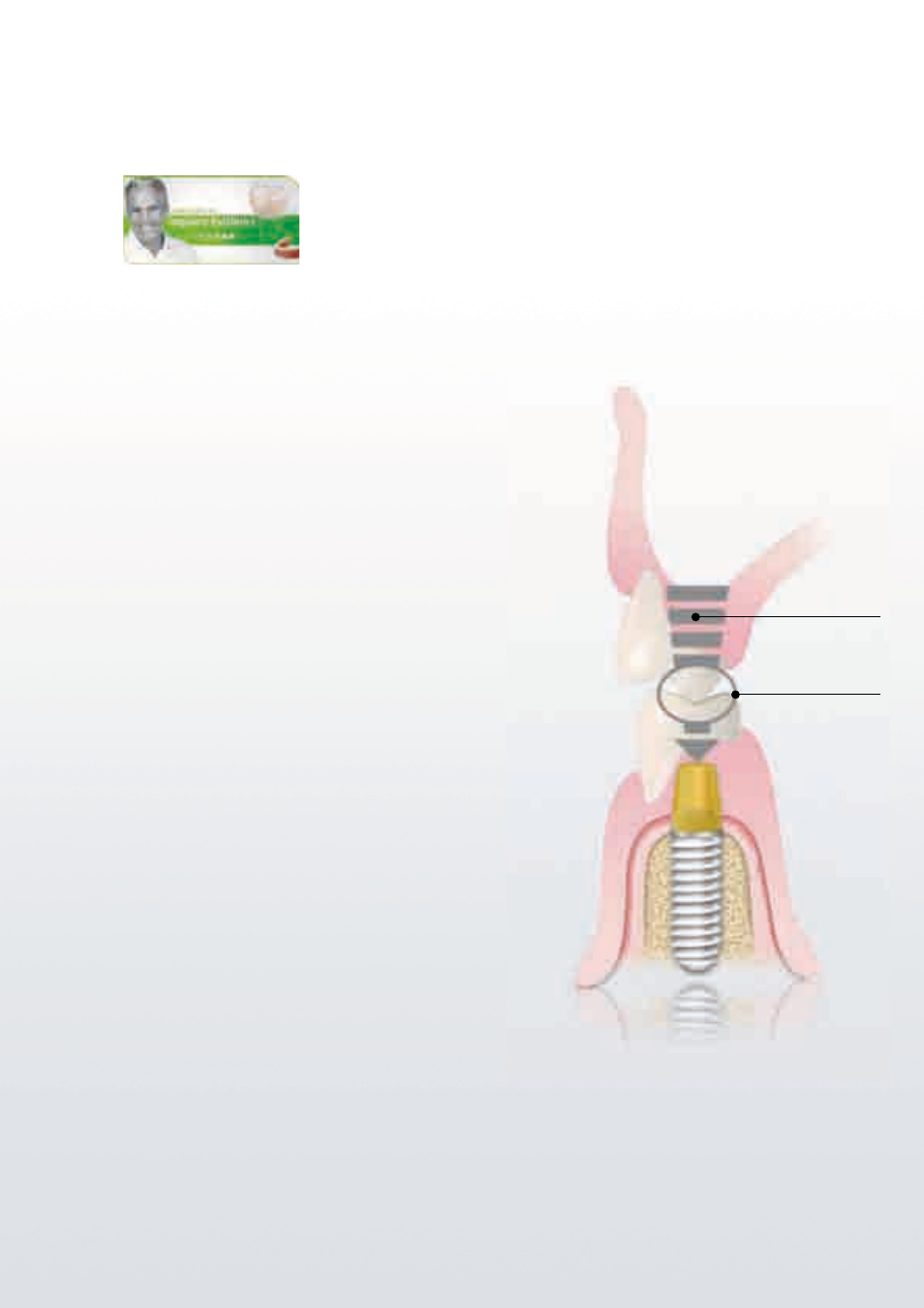Implant prosthetics – Ivoclar Vivadent SR Phonares II User Manual
Page 34

34
Rationale for choices of occlusal schemes for complete dentures supported by
Implants, Nikolopoulou, Ktene-Aqapitou, Journal of Oral Implantology,
Vol. XXXII/ No. Four/2006
Cross-section:
Removable restoration on
mandibular implant with tertiary
construction
Force vector
Implant prosthetics defines new requirements
for the materials and techniques used in dental
technology.
The periodontium is able to absorb some of the forces
to which restorations on natural abutments are
exposed.
In implant-supported dentures, however, these forces
are not cushioned by the periodontal ligament. The
proprioceptive feedback is reduced and edentulous
patients with implant-supported restorations are
capable of exerting significantly higher chewing forces
than patients with natural abutments.
Dental prostheses are constantly exposed to shear,
compressive and tensile forces. Compressive forces,
however, affect the implant interface substantially less
than the torque resulting from tensile or shear forces.
The SR Phonares II Lingual moulds are particularly
suitable for implant-supported prosthetics:
• As most occlusal contact is centralized, denture
stability is enhanced.
• The masticatory forces can be directed to the implant
by a force vector in the longitudinal axis. This results
in a reduction of the shear and tensile forces.
• The occlusal design of the mandibular Lingual mould
is characterized by a widened occlusal table, reduced
marginal ridges and freeway space in the centric
position. As a result, high lateral forces are avoided.
• The specially developed Nano Hybrid Composite
offers excellent wear resistance.
Lingualized
contact
imPlAnt ProsthetiCs
